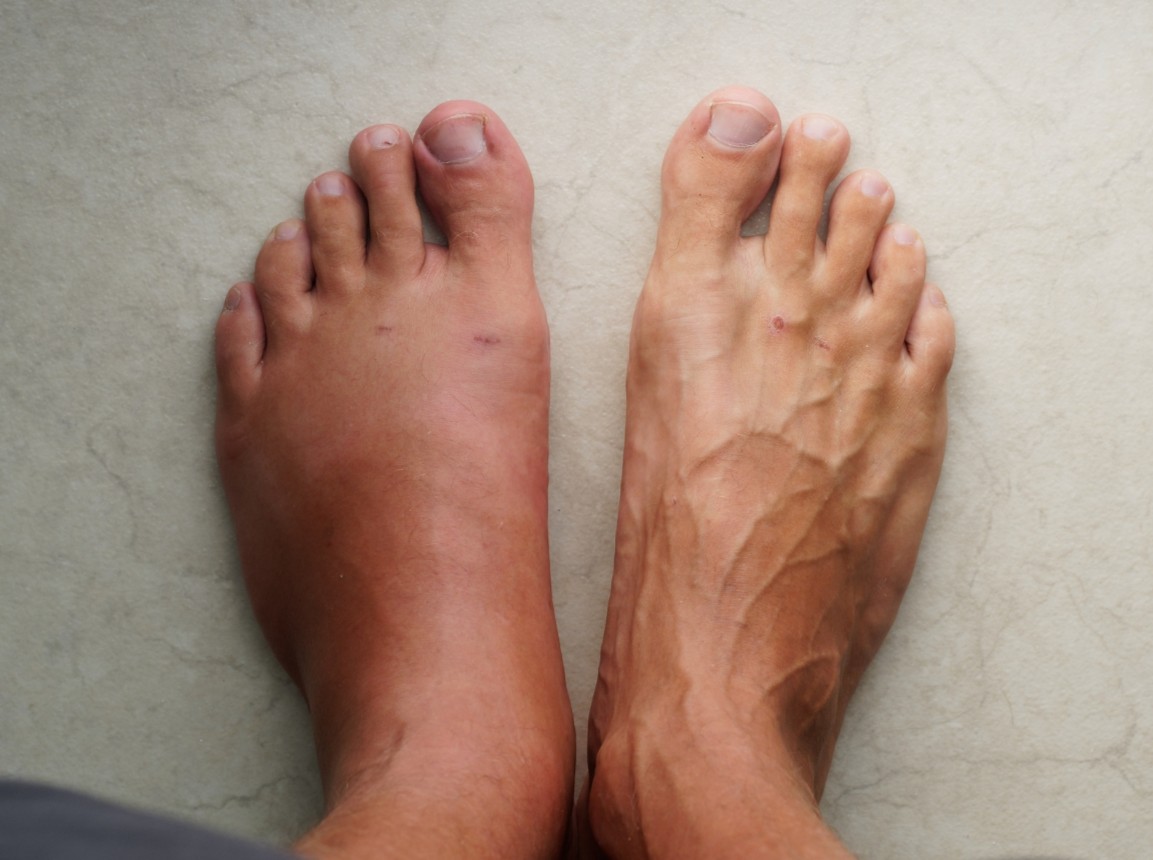Capsulitis describes the damage to, and inflammation of, a joint capsule, which is formed by ligaments that enclose the joint and help it function effectively. Joint capsules are present all around our body, including the toe joints (metatarsophalangeal joints) in our feet where capsulitis occurs most frequently. The below will refer to capsulitis in these metatarsophalangeal joints.

The terms ‘capsulitis’ and ‘synovitis’ are often used interchangeably, though they describe different aspects of joint capsule damage. Synovitis is associated with the increased production of synovial fluid within the joint that results in additional swelling. The membrane inside the joint capsule is called the synovial membrane, which is responsible for the production of this synovial fluid.
When it comes to the toe joints in the feet, the most common cause of capsulitis is overloading the ball of the foot. Any activity or contributing factor that places excess strain and pressure on the joints of the ball of the feet can cause damage to the joint capsule ligaments, resulting in the onset of painful symptoms. This includes activities that push the toes upwards on the foot. Causes can include:
Synovitis can occur through the same causes as capsulitis, but is also associated with inflammatory disease processes such as in arthritis. It is the recurrent or ongoing inflammation that leads to further degeneration at the joints and the progressive worsening of symptoms.
Capsulitis and synovitis often affect the second toe, though can affect any of the toes. Symptoms can include:
Treatment is the same for both capsulitis and synovitis, though when synovitis is part of a disease process, it usually contains a strong anti-inflammatory component as part of disease management. Treatment focuses on relieving the heavy load from the joint capsules and allowing the ligaments to heal and repair. This may include:

We’ve all had those days — you come home after hours on your feet, kick off your shoes, and notice your ankles look puffier than usual.
Swelling in the feet, ankles, or legs (known medically as edema) isn’t always a reason to panic. It can be as simple as a
salty lunch or a long flight.
But what if it’s happening more often — or seems to be getting worse? Swelling can sometimes be a sign of something more serious. Here’s
what could be going on and when to check in with your doctor.
.jpg)
Every year on October 8th, the world celebrates International Podiatry Day - a day dedicated to
raising awareness about foot health and the vital role that podiatrists play in our overall well-being.
Keeping your family on their feet and helping them to walk, run, play and exceed their goals is why we love getting up in the morning.
Ground Floor, One Health Building
122 Remuera Rd, Remuera
Auckland 1050, New Zealand
| MON - FRI | 7:30am – 6:30pm |
| SAT | 8:30am – 4:30pm |
| SUN | Some availability |
Make an Appointment
Online Schedule
Our virtual receptionist is available 24/7 to help with general questions, booking requests, and clinic information, even when our team is busy, or it's after hours.
Whether you're calling us or using our website, you'll get fast assistance any time of day. And if your query needs a personal touch, a member of our team will follow up as soon as possible.
If you’d like to see a podiatrist who speaks your preferred language, just give us a call and we’ll help you book.